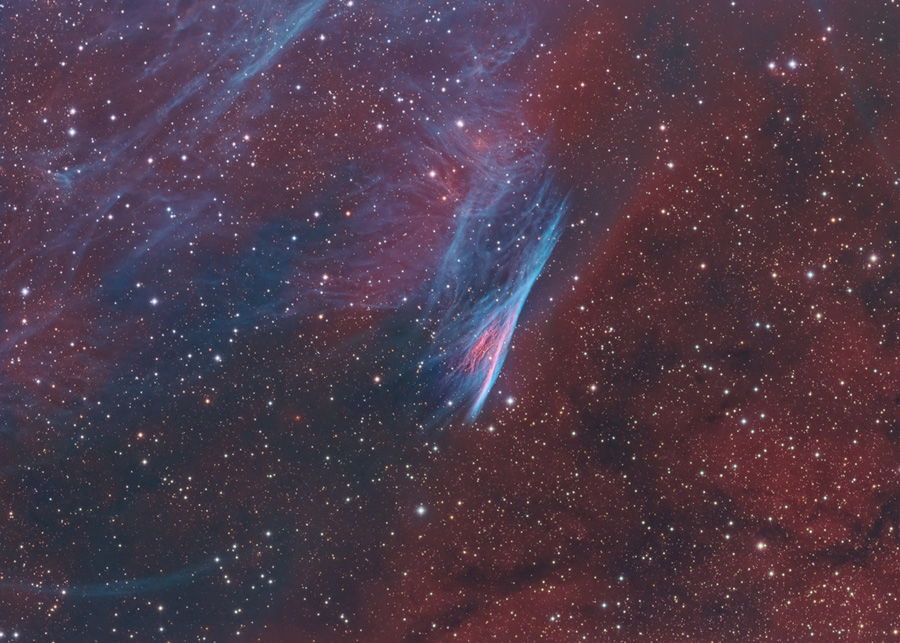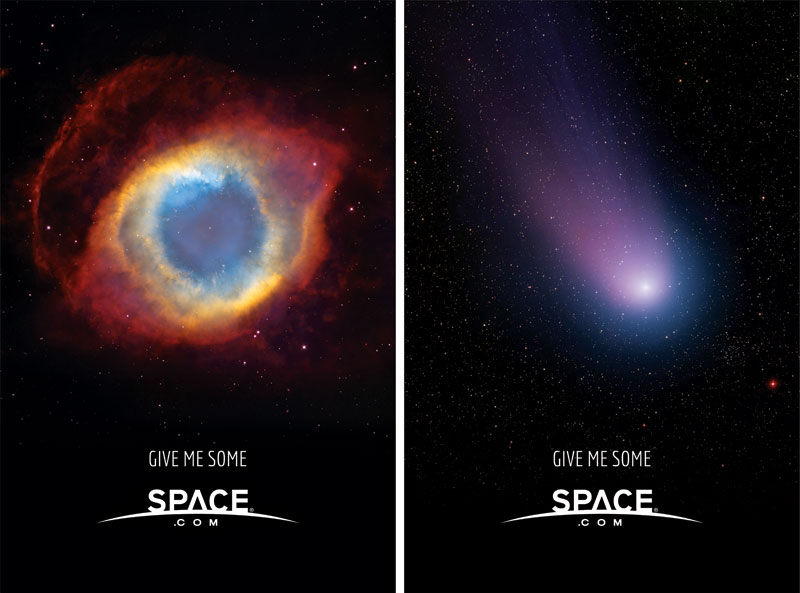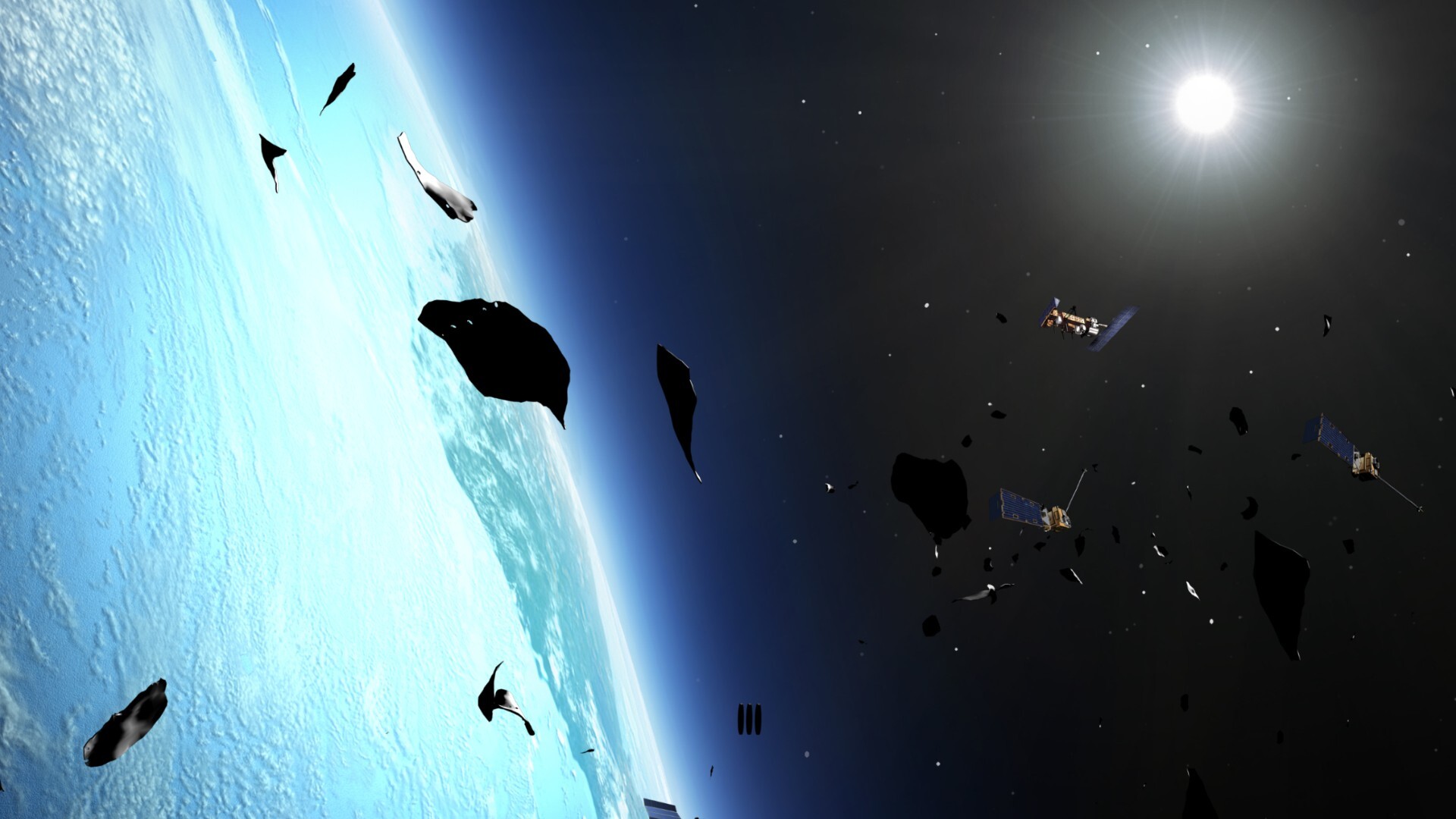Amazing Pencil Nebula Glows on Deep-Space Canvas (Photo)

The thin, woven filaments in this beautiful image resemble an artist’s etching into a canvas of glowing gas.
Martin Pugh took this image of the Pencil Nebula, or NGC 2736, from his home in Yass, New South Wales, Australia over the course of two weeks in March,2013.
Pugh used a Takahashi FSQ106N telescope with a Paramount ME Software Bisque mount, SBIG STF8300/FW8300-8 Baader 36mm filters, and Maxim DL as well as CCDAutopilot software to capture the photo. He processed the image with Maxim DL/CCD, Photoshop CS, CCDStack and PixInsight. The total exposure time was 10 hours.
The Pencil Nebula is located 800 light-years away and is five light-years long. The nebula, named for its elongated appearance, is an interstellar shockwave seen nearly edge-on. The shockwave travels through space at an astonishing 310,685 mph (500,000 km/h). Scientists say the nebula is part of the larger Vela supernova remnant that produced the initial shockwave. In the image, the red and blue regions mark the glow from hydrogen and oxygen atoms.
Editor's note: If you have an amazing skywatching photo you'd like to share for a possible story or image gallery, please contact managing editor Tariq Malik at spacephotos@space.com.
Follow us @Spacedotcom, Facebook and Google+.
Breaking space news, the latest updates on rocket launches, skywatching events and more!
Nina Sen is a freelance writer and producer who covered night sky photography and astronomy for Space.com. She began writing and producing content for Space.com in 2011 with a focus on story and image production, as well as amazing space photos captured by NASA telescopes and other missions. Her work also includes coverage of amazing images by astrophotographers that showcase the night sky's beauty.

